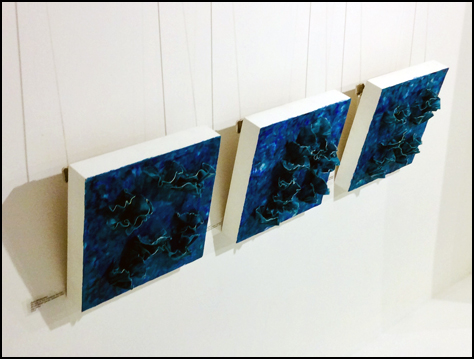Although this form of art dates back to Greek and Roman times it is unusual in medium and technique and you may want to know more about it. Here is an encaustic FAQ but if you have any further questions please comment or send me a message through this site.
What is encaustic painting?
An encaustic painting is created with melted wax and resin. There are a couple of distinct ways to do this. Some artists like to use a small hot iron to apply the coloured wax, such as Phil Madley who produces stunning graphical abstracts. Other encaustic artists layer molten wax and then fuse these layers together. I prefer this latter method as it yields a wonderful range of possibilities, from realistic and representational through to impressionistic and abstract.
Do you teach encaustic painting?
Yes I teach encaustic painting to individuals and to groups at all levels. I devised and led workshops at the National Maritime Museum and taught professional artists on a one-to-one basis. I also teach advanced techniques in workshops run by other artists. If you want to take a workshop with me please contact me through this site.

Why use wax in paintings?
Wax is a wonderful tactile medium which displays an incredible textural translucency. I like to make use of these traits. Building up an image in many layers generates an impression of depth in my paintings. I also create relief pieces such as these below (shown in Espacio Gallery 2016). Plus wax smells fabulous!
Do the paintings ever melt?
This is a common encaustic FAQ. Encaustic paintings rarely melt. This is because the wax is combined with resin so that the melting temperature is around 71C/160F upwards, a temperature that would be far too hot for comfort. Consequently your encaustic artworks are unlikely to melt in the standard temperatures of your home or office.
How do I care for an encaustic painting?
Above all treat encaustic paintings much like any other pieces of fine art. For instance avoid direct sunlight which can cause fading in all types of art media. I use a very soft large make-up brush to remove any dust then gently buff with a soft lint free cloth.
Any other encaustic FAQ you’d like to ask?
Please contact me through this site and I’ll update this page.